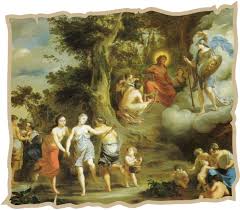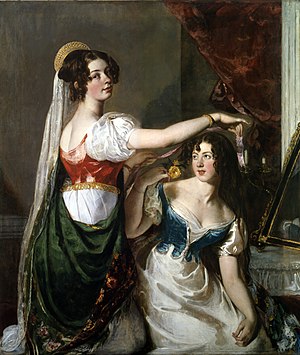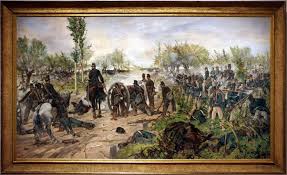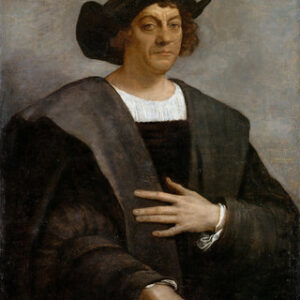An art school is an educational institution with a primary focus on the visual arts, including fine art – especially illustration, painting, photography, sculpture, and graphic design. Art schools can offer elementary, secondary, post-secondary, or undergraduate programs, and can also offer a broad-based range of programs (such as the liberal arts and sciences). There have been six major periods of art school curricula,and each one has had its own hand in developing modern institutions worldwide throughout all levels of education. Art schools also teach aSchool of Arts and Humanitiesacademic skills to many students.
History
There have been six definitive curricula throughout the history of art schools. These are “apprentice, academic, formalist, expressive, conceptual, and professional”. Each of these curricula have aided not only the way that modern art schools teach, but also how students learn about art.
Art schools began being perceived as legitimate universities in the 1980s. Before this, any art programs were used purely as extracurricular activities, and there were no methods of grading works. After the 1980s, however, art programs were integrated into many different kinds of schools and universities as legitimate courses that could be evaluated. While some argue that this has weakened creativity among modern art students, others see this as a way to treat fine arts equally in comparison with other subjects.

Apprentice curriculum
Apprentice paths teach art as a mixture of aesthetic and function. Typically, a student would apprentice to someone who was already skilled in some sort of trade in exchange for food and housing. Many of the Old Masters were trained in this manner, copying or painting in the style of their teacher in order to learn the trade. Once the apprenticeship ended, the student would have to prove what they learned by creating what we know today as a “masterpiece”. In modern schooling, this can be seen in practical art classes, including photography or printmaking.
Academic curriculum
Academic curricula began during the sixteenth-century Italian Renaissance, in which some of the earliest art academies were established. Up through the nineteenth century, these academies multiplied through both Europe and North America. This is when art began to become about both talent and intellect.
Formalist curriculum
The formalist curriculum began mid-twentieth century, and focused on the basic components of artwork, such as “color, shape, texture, line – and a concern with the particular properties of a material or medium”. This curriculum is most noted for including the height in popularity of Bauhaus. It was based on logic, mathematics, and Platonism, which was universal at the time.
Expressive curriculum
Although the expressive curriculum was formed at the same time as the formalist one, it focuses on completely different aspects of art. Rather than being concerned with the literal components of a piece of art, expressive curricula encouraged students to express their emotions and practice spontaneity. This is due to the heightened popularity of romanticism throughout the Renaissance.
Conceptual curriculum
The conceptual curriculum began in the late twentieth century, and it focused on not only creating artwork, but presenting and describing the thought process behind the work. This is when the idea of critiquing others’ works for educational purposes became popularized in North America (as the concept had been shut down quickly in Europe). This serves as a model for modern-day art school programs.

Professional curriculum
Professional curricula began appearing in art schools at the very end of the twentieth century. They teach students artistry from a perspective of business, and typically focus on modern pop culture within the works themselves. These programs are designed to teach students how to promote both themselves and their artwork.
Modern
A wide variety of art mediums and styles are integrated into modern art school programs. Different mediums that are taught include painting, printmaking, drawing and illustration, theatre, and sculpture. Newer programs can include graphic design, filmmaking, graffiti art, and certain kinds of digital media.
Online
In recent years a number of art schools have begun to offer some or all of their curricula online, which by nature, transcends national boundaries. Among these are The Art Institute of Pittsburgh Online and Academy of Art University. As with on-ground schools, many of the majors involve computer-based work, such as compositions created in Photoshop, Illustrator, or 3D-Studio Max. Submission and review of these materials proceeds virtually identically for on-ground and online classes. When online courses require production of traditional drawings or other such materials, they usually are photographed or scanned for submission and review by instructors.
In early education
According to the International Journal of Art and Design Education, “mainstream educational contexts could foster drawing behavior and the related emotional benefits to a greater extent”. Throughout a study done in the United Kingdom, it was determined that children whose parents or guardians involved them in drawing from an early age had a stronger connection with art. These children were shown to have better art skills and a significantly better chance at pursuing a career in fine arts.
Art schools and mental health
A study done by Bryan Goodwin that focused on the “Mozart effect”, which refers to the idea that listening to classical music is beneficial toward mental and intellectual development, discovered that art education is useful to students of any age.It was discovered that learning both music and art within one’s education were helpful in processing symptoms for sufferers of PTSD, anxiety, and depression.
The humanities include the study of all languages and literature, the arts, history, and philosophy. The humanities are sometimes organized as a school or administrative division in many colleges and universities in the United States.
The arts and humanities are academic disciplines that study human culture, context and achievement. They span a huge range of subject areas and enormous time frames, examining the many different ways in which humans have sought to understand and express themselves throughout history.

Methodologies
Art history is an interdisciplinary practice that analyzes the various factors—cultural, political, religious, economic or artistic—which contribute to visual appearance of a work of art.
Art historians employ a number of methods in their research into the ontology and history of objects.
Art historians often examine work in the context of its time. At best, this is done in a manner which respects its creator’s motivations and imperatives; with consideration of the desires and prejudices of its patrons and sponsors; with a comparative analysis of themes and approaches of the creator’s colleagues and teachers; and with consideration of iconography and symbolism. In short, this approach examines the work of art in the context of the world within which it was created.
Art historians also often examine work through an analysis of form; that is, the creator’s use of line, shape, color, texture and composition. This approach examines how the artist uses a two-dimensional picture plane or the three dimensions of sculptural or architectural space to create their art. The way these individual elements are employed results in representational or non-representational art. Is the artist imitating an object or can the image be found in nature? If so, it is representational. The closer the art hews to perfect imitation, the more the art is realistic. Is the artist not imitating, but instead relying on symbolism or in an important way striving to capture nature’s essence, rather than copy it directly? If so the art is non-representational—also called abstract. Realism and abstraction exist on a continuum. Impressionism is an example of a representational style that was not directly imitative, but strove to create an “impression” of nature. If the work is not representational and is an expression of the artist’s feelings, longings and aspirations or is a search for ideals of beauty and form, the work is non-representational or a work of expressionism.
An iconographical analysis is one which focuses on particular design elements of an object. Through a close reading of such elements, it is possible to trace their lineage, and with it draw conclusions regarding the origins and trajectory of these motifs. In turn, it is possible to make any number of observations regarding the social, cultural, economic and aesthetic values of those responsible for producing the object.

Many art historians use critical theory to frame their inquiries into objects. Theory is most often used when dealing with more recent objects, those from the late 19th century onward. Critical theory in art history is often borrowed from literary scholars and it involves the application of a non-artistic analytical framework to the study of art objects. Feminist, Marxist, critical race, queer and postcolonial theories are all well established in the discipline. As in literary studies, there is an interest among scholars in nature and the environment, but the direction that this will take in the discipline has yet to be determined.
Timeline of prominent methods
Pliny the Elder and ancient precedents
The earliest surviving writing on art that can be classified as art history are the passages in Pliny the Elder’s Natural History (c. AD 77-79), concerning the development of Greek sculpture and painting.From them it is possible to trace the ideas of Xenokrates of Sicyon (c. 280 BC), a Greek sculptor who was perhaps the first art historian.Pliny’s work, while mainly an encyclopaedia of the sciences, has thus been influential from the Renaissance onwards. (Passages about techniques used by the painter Apelles c. (332-329 BC), have been especially well-known.) Similar, though independent, developments occurred in the 6th century China, where a canon of worthy artists was established by writers in the scholar-official class. These writers, being necessarily proficient in calligraphy, were artists themselves. The artists are described in the Six Principles of Painting formulated by Xie He.
Vasari and artists’ biographies
While personal reminiscences of art and artists have long been written and read (see Lorenzo Ghiberti Commentarii, for the best early example),[8] it was Giorgio Vasari, the Tuscan painter, sculptor and author of the Lives of the Most Excellent Painters, Sculptors, and Architects, who wrote the first true history of art.He emphasized art’s progression and development, which was a milestone in this field. His was a personal and a historical account, featuring biographies of individual Italian artists, many of whom were his contemporaries and personal acquaintances. The most renowned of these was Michelangelo, and Vasari’s account is enlightening, though biased[citation needed] in places.
Vasari’s ideas about art were enormously influential, and served as a model for many, including in the north of Europe Karel van Mander’s Schilder-boeck and Joachim von Sandrart’s Teutsche Akademie.[citation needed] Vasari’s approach held sway until the 18th century, when criticism was leveled at his biographical account of history.
Winckelmann and art criticism
Scholars such as Johann Joachim Winckelmann (1717–1768), criticized Vasari’s “cult” of artistic personality, and they argued that the real emphasis in the study of art should be the views of the learned beholder and not the unique viewpoint of the charismatic artist. Winckelmann’s writings thus were the beginnings of art criticism. His two most notable works that introduced the concept of art criticism were Gedanken über die Nachahmung der griechischen Werke in der Malerei und Bildhauerkunst, published in 1755, shortly before he left for Rome (Fuseli published an English translation in 1765 under the title Reflections on the Painting and Sculpture of the Greeks), and Geschichte der Kunst des Altertums (History of Art in Antiquity), published in 1764 (this is the first occurrence of the phrase ‘history of art’ in the title of a book)”. Winckelmann critiqued the artistic excesses of Baroque and Rococo forms, and was instrumental in reforming taste in favor of the more sober Neoclassicism. Jacob Burckhardt (1818–1897), one of the founders of art history, noted that Winckelmann was ‘the first to distinguish between the periods of ancient art and to link the history of style with world history’. From Winckelmann until the mid-20th century, the field of art history was dominated by German-speaking academics. Winckelmann’s work thus marked the entry of art history into the high-philosophical discourse of German culture.
Winckelmann was read avidly by Johann Wolfgang Goethe and Friedrich Schiller, both of whom began to write on the history of art, and his account of the Laocoön group occasioned a response by Lessing. The emergence of art as a major subject of philosophical speculation was solidified by the appearance of Immanuel Kant’s Critique of Judgment in 1790, and was furthered by Hegel’s Lectures on Aesthetics. Hegel’s philosophy served as the direct inspiration for Karl Schnaase‘s work. Schnaase’s Niederländische Briefe established the theoretical foundations for art history as an autonomous discipline, and his Geschichte der bildenden Künste, one of the first historical surveys of the history of art from antiquity to the Renaissance, facilitated the teaching of art history in German-speaking universities. Schnaase’s survey was published contemporaneously with a similar work by Franz Theodor Kugler.






